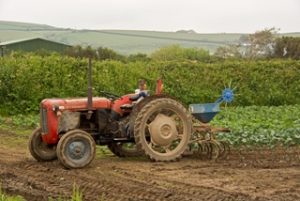Three new approaches to rural land systems stand out: large-scale ecosystem restoration, regenerative agriculture and rewilding
.
How can farmers and landowners be encouraged and helped to improve wildlife habitats?
Farming and biodiversity – Vision Group for Sidmouth
Farming and public goods – Vision Group for Sidmouth
.
Looking at ‘biodiversity offsetting’, Rob Wreglesworth of the Environment Bank writes on how landowners can benefit from new regulations:
Biodiversity Net Gain – An Opportunity for Landowners – FCG Agric
.
Prof Ian Hodge of Cambridge University, writing for the CAP Reform blog, looks at more of the regulatory framework:
.
 We continue to face environmental losses across the farmed environment. At global, EU and UK scales, we are still seeing a decline in the populations of numerous species. This loss has been recognised in the Leaders’ Pledge for Nature: “Science clearly shows that biodiversity loss, land and ocean degradation, pollution, resource depletion and climate change are accelerating at an unprecedented rate”. The RSPB has claimed a lost decade in the failure to address the Aichi targets.
We continue to face environmental losses across the farmed environment. At global, EU and UK scales, we are still seeing a decline in the populations of numerous species. This loss has been recognised in the Leaders’ Pledge for Nature: “Science clearly shows that biodiversity loss, land and ocean degradation, pollution, resource depletion and climate change are accelerating at an unprecedented rate”. The RSPB has claimed a lost decade in the failure to address the Aichi targets.
The indexes of farmland birds in the EU and the UK continue their downward trend. There are no obvious improvements in water quality with many water bodies failing to meet Water Framework Directive standards. There are growing concerns about soil and air quality. And agriculture is a major driver of these changes. In this context, the UK government has pledged to be the first to leave the environment in a better state than that in which it inherited it. What more can we do?
The implication must be that we need to see more fundamental changes in land management systems than we have seen to date. This requirement seems to be recognised by the European Commission (2020 p.8) : “To achieve these aims, it is essential to increase the value given to protecting and restoring natural ecosystems, to the sustainable use of resources and to improving human health.”
Three new approaches to rural land systems stand out as being potentially significant elements of such new approach: large-scale ecosystem restoration, regenerative agriculture and rewilding.
…